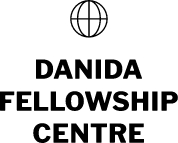Renewable Energy based Minigrid Clusters in Ethiopia-REMCE
Info
Start date: 1 May, 2021 End date: 31 December, 2024 Project type: Research projects in countries with targeted development cooperation (earlier Window 2) Project code: 20-M04AAU Countries: Ethiopia Thematic areas: Energy, Lead institution: Aalborg University (AAU), Denmark Partner institutions: Hawassa University (HU), Ethiopia Ministry of Water, Irrigation, and Energy (MoWIE), Ethiopia Ethiopian Electric Utility (EEU), Ethiopia Ethiopian Electric Power (EEP), Ethiopia Kenergy ApS. (KEN), Denmark Gomspace A/S (GOM), Denmark Project website: go to website (the site might be inactive) Project coordinator: Sanjay Chaudhary Total grant: 4,999,804 DKKProject summary
According to recent studies, around 55% of 110 million inhabitants of Ethiopia (especially in rural areas) have no access to electricity. In addition, the electrified regions of the country, which are mainly based on hydroelectric power plants, are suffering from frequent outages. To deal with these challenges and increase the access to reliable and affordable electricity in Ethiopia, diversifying the energy sources and building clusters of renewable energy-based minigrids with some energy storage systems are proposed in this project. To this end, this project will collect and analyze the relevant data and information to examine and select the most suitable locations and the best configuration of minigrid, and recommends necessary actions and measures to accommodate the energy demand for the remote areas. The project will focus on solar and wind resources in combination with diesel generators, battery energy storage systems, and micro hydropower systems to implement multiple minigrids. These minigrids will be connected to each other and form clusters with high levels of efficiency, scalability, and expandability. It is envisioned that those clusters may have the potential to be connected to the main grid in the future. This project is totally in line with the national energy policies in Ethiopia, the joint Danish-Ethiopian cooperation, and SDG goals of the UN, and its findings/outcomes will provide worthwhile information for the hybrid minigrid development road map of Ethiopia and all decision-makers and stakeholders, including energy authorities, electric utilities, market players, and potential investors.
Outputs
Go back to all projects

